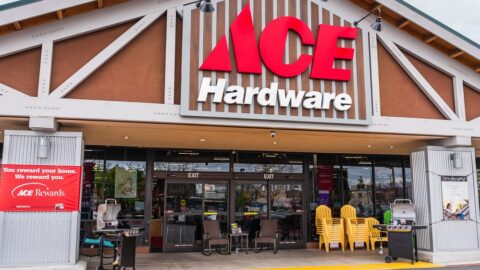Ace Hardware’s commitment to the SAP solution portfolio has been paying off for the 4,100-store cooperative since the initial implementation in 2007. Initially, “we transitioned to SAP for the efficiencies, flexibility and controls we believed an integrated system would bring to Ace’s supply chain,” noted Rick Williams, Director, Business Relationship for Ace. “From an IT perspective, we have much more visibility into the flow and status of retailers’ orders.” With the old system, he noted, “we had to closely monitor our order processing system every evening, responding to crises and issues. That has almost gone away completely.”
Beginning with the selection of mySAP™ ERP and the SAP® for Retail in 2006, Ace has seen incremental success with the solutions through the present and expects to continue reaping the benefits into the future. “Now we have much greater insight into our inbound shipments, vendor performance and distribution processes that we never had before,” said Williams. “Our SAP audits are so clean now we can probably shift our attention to other areas.”
The Shift From Homegrown Systems
Until 2006, Ace Hardware built most of its applications in-house, Williams told Retail TouchPoints. When the current CIO, Mike Elmore, joined Ace in 2005 as the VP of IT, “he brought a new perspective to the organization,” Williams noted. “At the time there were a number of things that were putting pressure on our legacy systems, as one would expect if you build them up over 25 years. The systems were limiting what the business could do. We knew it was time to take a holistic look at the architecture, platform, and systems, and determine what we could do to modernize.”
Ace began the planning phase of the SAP implementation in 2007. The components of SAP were implemented in 2008 and financials was added in 2009. By the end of 2010 the initial implementation was complete. The system then required some “stabilization” in Q1 2011. “When we moved the system out to our 14 DCs, due to the newness of the system, we caused some disruptions to our operations,” Williams explained. That settled down relatively quickly, he noted, “but the fourth phase of the implementation impacted the 4,100+ retail locations, which resulted in some issues we had to respond to quickly. We were in crisis mode the first month after go-live, but things quieted down relatively quickly. We just found that the project team had to stay engaged longer during the fourth phase and the implementation partner had to reengage to address some lingering issues.”
But all in all the implementation was on time and successful, according to Williams. “We only have a year under our belts and the pace at which we’re learning the new technologies is impressive and greater than expected.”
Lessons Learned
The best advice Williams offered for other retail organizations facing a similar implementation is to avoid simply re-creating the legacy systems. “We didn’t want to recreate our legacy systems with this new tool; we wanted to change our business practices,” he noted. “I would recommend a strong emphasis on go-forward business processes and modeling them, without being completely blind to established business practices.”
As the team becomes more and more comfortable with the SAP systems, more enhancements are on the horizon. Ace will be looking to better manage inventory, order management and procurement, Williams noted. Ace also is considering adding pricing and CRM from SAP.












